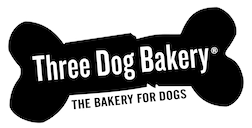Show Me The Love! Don’t Forget!

 Learning something new can be exciting and fun…provided you remember it the next day. After all, who wants to live the same day over and over a la “Groundhog Day”? I’m sure you don’t, and I doubt your dog wants to, either. So, how can you help your dog remember what he’s learned during a training session? A recent study by Dr. Stanley Coren, published in Psychology Today, explained that what a dog does after a training session affects the amount he remembers from the session. The more he remembers from a previous training session, the better he will do in future sessions. You already know, or should know, that mixing play with training encourages your dog to pay better attention and to become an enthusiastic student. Now researchers have finally figured out what dog lovers knew all along: that playing with your dog after a training session is just as important as the actual training session.
Learning something new can be exciting and fun…provided you remember it the next day. After all, who wants to live the same day over and over a la “Groundhog Day”? I’m sure you don’t, and I doubt your dog wants to, either. So, how can you help your dog remember what he’s learned during a training session? A recent study by Dr. Stanley Coren, published in Psychology Today, explained that what a dog does after a training session affects the amount he remembers from the session. The more he remembers from a previous training session, the better he will do in future sessions. You already know, or should know, that mixing play with training encourages your dog to pay better attention and to become an enthusiastic student. Now researchers have finally figured out what dog lovers knew all along: that playing with your dog after a training session is just as important as the actual training session.
 In a new study, published in the journal Physiology & Behavior, Nadja Affenzeller from the Animal Behavior Cognition and Welfare Group in the School of Life Sciences at the University of Lincoln in the United Kingdom led a group of researchers to discover how experiences after training affect what is learned and retained. When someone is aroused emotionally, hormones are released that help memory. This has been proven in laboratory animals as well by using drugs to stimulate arousal. The opposite is also true, that if you stop arousal after training, chances are less that the material learned will be remembered. Now, you could go out for a night of partying with your dog after a training session but, without the proper ID to prove that he’s 21 years old, your dog might not be allowed to party with you. A better idea might be to do what they did in the study: play with your dog.
In a new study, published in the journal Physiology & Behavior, Nadja Affenzeller from the Animal Behavior Cognition and Welfare Group in the School of Life Sciences at the University of Lincoln in the United Kingdom led a group of researchers to discover how experiences after training affect what is learned and retained. When someone is aroused emotionally, hormones are released that help memory. This has been proven in laboratory animals as well by using drugs to stimulate arousal. The opposite is also true, that if you stop arousal after training, chances are less that the material learned will be remembered. Now, you could go out for a night of partying with your dog after a training session but, without the proper ID to prove that he’s 21 years old, your dog might not be allowed to party with you. A better idea might be to do what they did in the study: play with your dog.
 Researchers took 16 Labradors and trained them to discriminate between two objects of different shapes and smells. Once the dogs reached a consistency of 80% accuracy or better, training stopped. The dogs were then divided into two groups. One group was allowed to play for thirty minutes, while the other rested for those same thirty minutes. The “play” group was walked and they played interactive games such as fetching or tugging. The “rest” group just laid there but were not allowed to go to sleep. Both groups were monitored via heart rate and saliva testing for hormones to confirm that there was a significant difference in the level of excitement between the two groups.
Researchers took 16 Labradors and trained them to discriminate between two objects of different shapes and smells. Once the dogs reached a consistency of 80% accuracy or better, training stopped. The dogs were then divided into two groups. One group was allowed to play for thirty minutes, while the other rested for those same thirty minutes. The “play” group was walked and they played interactive games such as fetching or tugging. The “rest” group just laid there but were not allowed to go to sleep. Both groups were monitored via heart rate and saliva testing for hormones to confirm that there was a significant difference in the level of excitement between the two groups.
The following day, the dogs were again “trained” to perform the same task they had been trained to perform the day before, in order to see how much they remembered. Not surprisingly, the dogs from the “play” group relearned the behavior 40% more quickly than the “rest” group dogs did. I think we can all agree that there is great value in adding a play session after every training session, at least until your dog is legally able to go clubbing. Then you can go out partying with him instead of playing frisbee. But by the time he’s 21, he will have already mastered all obedience commands, anyway.
